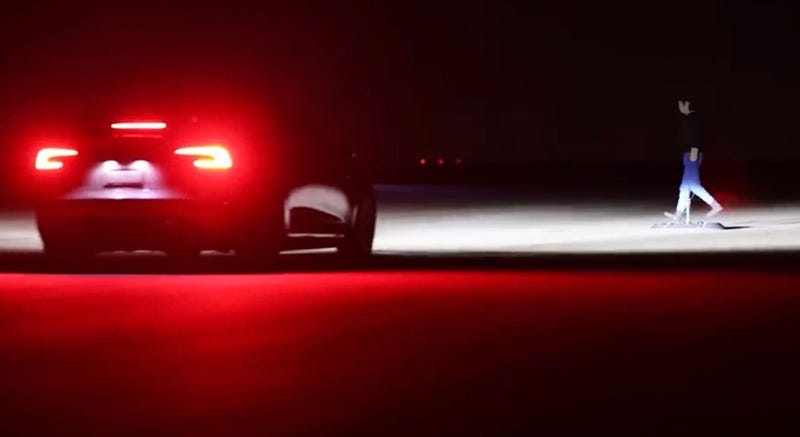
(WWJ) Automated systems are doing a better job of seeing pedestrians, but a new AAA survey shows they are still far from perfect, and there are some areas of real concern.
The systems are called pedestrian automatic emergency braking. When the Triple A studied the systems six years ago, they weren’t able to detect pedestrians at night. Today, the systems detected the test dummies sixty percent of the time.
“Recent improvements in pedestrian automatic emergency braking systems are promising. However, there is still more work to be done,” said Greg Brannon, AAA’s Director of Automotive Engineering Research. “Most pedestrian fatalities occur at night, and these systems can make a
significant difference during those hours. However, mixed performances with high-visibility clothing indicate that further refinement and testing are necessary to save more lives, including those of our roadside assistance providers.”
The tests also worked to see if putting the dummies in high visibility clothing–the type often worn by road crews and emergency responders–helped the systems better see pedestrians. Some systems stopped one hundred per cent of the time. In others, the high visibility clothing appeared to make pedestrians harder to see.
“That variation is something we’re very concerned about,” said Brannon. “We’re going to be pushing to have testing include this type of high visibility gear.”
In partnership with the Automobile Club of Southern California’s Automotive Research Center, AAA evaluated four vehicles with PAEB. Testing was conducted on a closed course using a robotic pedestrian adult crossing in front of the test vehicles traveling at 25 mph. Tests were conducted during the day and night with the adult pedestrian dressed in both standard, non-
reflective clothing and ANSI Class 3 high-visibility apparel.
Brannon said these systems have great life saving potential. But, he added that drivers also need to remain vigilant and watch closely for pedestrians at night, and in bad weather conditions.
“You should drive the car like the systems are not there, and just hope that in the situation that you need it, it will be there as a backstop for you.”
